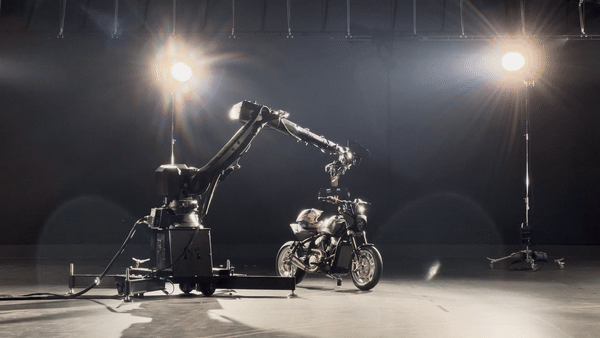Redefining Cinematic Precision: The Power of Motion Control in Modern Filmmaking
Why Motion Control is Changing the Game
Filmmaking has always been about innovation. From early camera rigs to today's robotic motion control systems, the goal remains the same—create seamless, dynamic, and repeatable shots that elevate storytelling. Motion control cinematography allows us to execute high-speed tracking, intricate tabletop work, and even action-packed sequences with unmatched precision. Whether it’s using a robot motion control camera to glide through a set or a motion control camera robot executing perfect slow-motion sequences, the technology has opened up possibilities that were unthinkable a decade ago.
Precision, Repeatability, and Creativity
One of the biggest challenges in cinematography is achieving perfect, repeatable shots. Enter robotic arm motion control camera rigs—these machines allow cinematographers to program precise movements that can be replicated down to the millimeter. This is a game-changer for:
Food and beverage cinematography, where liquid splashes and ingredient tosses need consistency
Product cinematography, where beauty shots require ultra-smooth motion
Action sequences, where dynamic camera moves need to be exactly the same for multiple takes
Slow motion cinematography, where a slow motion control camera robot ensures every frame captures the right movement
With motion control, you can lock in exact repeatable paths, allowing multiple takes with perfect alignment for seamless post-production editing.
How Motion Control Enhances Slow Motion Cinematography
Slow motion already adds drama and beauty to a shot, but combining it with motion control camera robots takes it to another level. Imagine tracking a water droplet as it collides with a surface in Phantom high-speed slow motion, all while the camera moves dynamically through the scene. This isn’t just about aesthetics—it’s about controlling every element of motion, light, and framing. With tools like Colossus by Motorized Precision, the movements are programmed, synchronized, and completely repeatable, allowing cinematographers to push creative boundaries without relying on chance.
The Role of Motion Control in Tabletop and Product Cinematography
For brands looking to showcase luxury products, food, or high-end beverages, the right cinematography makes all the difference. A robotic arm motion control camera rig lets us capture products in a way that feels larger than life. Imagine a perfume bottle floating effortlessly through light, or a cocktail pour captured with perfect clarity. Without motion control, these shots would require multiple attempts and luck—with robotics, they’re executed flawlessly, every time. The ability to sync camera movements with lighting shifts, product rotation, and environmental effects makes motion control indispensable in modern commercial cinematography.
Why Motion Control is the Future of Filmmaking
The best part? We’re only scratching the surface. As robot motion control cameras evolve, we’re seeing a future where AI, automation, and cinematography blend seamlessly. The demand for high-speed, high-precision, and repeatable filmmaking techniques is only growing, and motion control filmmaking is leading the charge. Whether it's a blockbuster promo, a cutting-edge product commercial, or an intricate food shoot, motion control is redefining what’s possible behind the lens. And honestly, as a cinematographer, I wouldn’t want to work without it.


